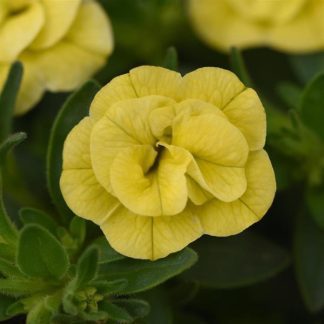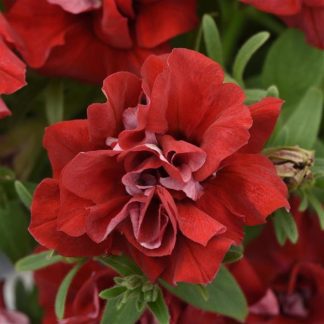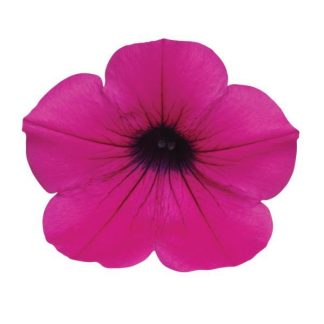Description
Embrace the Magic of Caladium ‘White Christmas’
Welcome to a Garden of Wonder
When you step into a shady summer corner and see leaves that glow like frosty lace, you know you have met Caladium ‘White Christmas’. This stunning foliage plant lights up porches, patios, and garden beds with a gentle shimmer. Together, we will explore its story, its needs, and all the ways you can bring its gleam into your life.
A Quick Snapshot
- Common Name: White Christmas Caladium
- Botanical Name: Caladium bicolor ‘White Christmas’
- Plant Type: Tropical tuber, treated as tender perennial or annual
- Leaf Style: Heart-shaped, snowy white center, crisp green veins
- Mature Size: 18–24 inches tall, 12–18 inches wide
- Light Needs: Bright shade to dappled sun
- Hardiness: USDA Zones 9–11 outdoors; grown as a summer annual or indoor plant elsewhere
The Origins: A Gift from Warm Earth
Caladiums hail from the Amazon basin, where filtered sunlight, warm rains, and rich soil nurture giant leafy tapestries. Breeders noticed natural sports with lighter leaf tissue and began selecting them. After more than a century of mixing and matching, ‘White Christmas’ appeared with its hallmark high-contrast pattern. Gardeners loved how its white center bounced light into dark corners. Breeders kept the veins sharp and the tuber hearty, giving us the stable cultivar we enjoy today.
What Makes ‘White Christmas’ Special
Imagine a sheet of handcrafted paper. Now add emerald threads running through it. That is what each leaf resembles. The white area is so broad that only the midrib and outer margin stay green. When the leaf unfurls, it almost looks lit from within. In other words, this plant does more than fill space. It creates mood.
Why we love it:
- Glow factor. Few shade plants read as bright at dusk.
- Clean palette. Pairs with any bloom color, from pastel impatiens to neon coleus.
- Compact form. Fits small pots and tight border edges without crowding neighbors.
- Low fuss. Once the soil warms and growth begins, maintenance is simple.
Light: Finding the Sweet Spot
Caladium leaves scorch under harsh midday rays, yet too little light dulls their pattern. We aim for morning sun or mottled afternoon shade.
- Outdoors: Under tall trees, next to north walls, or beneath pergola slats.
- Indoors: A bright east-facing window or several feet back from a south pane.
If leaves yellow or edges burn, move the pot to a softer setting. Thin plants above or add a sheer curtain. Small tweaks keep the show vibrant.
Soil: Rich, Loose, and Moist
‘White Christmas’ thrives in soil that mimics its jungle home: crumbly, packed with organic matter, and slightly acidic.
- Blend two parts high-quality potting mix with one part compost or aged bark.
- Sprinkle a handful of perlite for extra air pockets.
- Ensure the container drains well; soggy roots invite rot.
In garden beds, work leaf mold or composted manure into the top 8 inches. Earthworms will finish the mixing job.
Temperature and Humidity
Caladiums refuse to wake until soil hits 70 °F. Patience is key. We plant the tubers when nights stay above 60 °F.
- Optimal day range: 75–85 °F
- Night range: 65–75 °F
- Humidity: 50 percent or higher keeps leaves supple.
Dry indoor air? Place pots on pebble trays with water beneath the stones, or run a small humidifier nearby. Your houseplants will cheer too.
Planting: From Tubers to Tapestries
- Choose sound tubers. Look for firm, knotty pieces with visible eyes.
- Position eyes up. This encourages strong, upright shoots.
- Depth: 1–2 inches of soil above the tuber crown.
- Spacing: 8–10 inches apart in beds, one tuber per 6–8 inch pot.
After planting, water gently and wait. Shoots appear in two to three weeks in warm soil.
Watering Wisdom
Caladium roots sit near the surface, so even moisture matters.
- Frequency: Water when the top inch feels dry. In containers, that may be every two to three days during peak heat.
- Method: Slow soak at soil level. Avoid splashing the leaves; water spots mar the white canvas.
- Rainy spells: Ease off to prevent rot. Caladiums handle short drought better than prolonged sogginess.
Feeding: Fuel for Flourish
A balanced, slow-release fertilizer blended into the soil at planting provides a steady diet. Midseason, top-dress with a light sprinkle of organic 5-5-5 or fish-based fertilizer. Too much nitrogen can fade the white tones; moderate feeding keeps colors crisp.
Seasonal Rhythm
- Spring: Tuber planting. Warm, moist soil spurs sprouting.
- Summer: Peak display. Leaves reach full size, and clumps fill out.
- Early Fall: As nights dip below 60 °F, foliage slows.
- Late Fall: In cool zones, leaves yellow naturally. We lift tubers before frost, cure them in dry peat for two weeks, and store at 60–70 °F.
- Winter: Resting stage. Keep tubers dry and dark.
Indoor growers can extend the show by keeping temperatures steady, though a brief winter rest often refreshes vigor.
Pots, Beds, and Creative Displays
Container Magic
- Pair ‘White Christmas’ with silver dichondra, coral begonias, or purple heart.
- Use charcoal or black ceramic pots for dramatic contrast.
- Group three sizes of pots at different heights for a tiered glow effect.
Garden Bed Harmony
- Edge shady paths so the leaves catch dappled morning sun.
- Mix with fern fronds for texture, or position near chartreuse hostas for a gentle echo.
- Plant in masses of ten or more for an easy “river of light” across the understory.
Special Touches
- Slip small pots into hanging baskets under a canopy to brighten the mid-level view.
- Create a moon garden corner by pairing with white impatiens and lunar eclipse hydrangea, then add solar lanterns for night sparkle.
Indoors: Bringing the Forest Home
Place the pot where you enjoy morning coffee. The leaves greet you like snowflakes in July.
- Lighting: Bright but indirect. Rotate pots weekly for even growth.
- Humidity: Mist lightly or cluster with other leafy plants.
- Cleaning: Wipe leaves with a damp cloth to remove dust and restore the glow.
- Dormancy: When leaf tips slump in late fall, reduce water and allow soil to dry. Move the tuber to rest if you like, or keep the pot barely damp in a warm spot. New shoots may return in early spring.
Pests and Problems
- Spider Mites: Fine webbing and pale speckling. Boost humidity and rinse foliage.
- Mealybugs: Cottony clusters in leaf axils. Dab with alcohol-soaked swab.
- Leaf Spot: Watermarks and brown edges. Improve airflow, water at soil level.
- Rot: Mushy tubers. Plant in warmer soil and improve drainage next season.
Stay observant. Early action saves the show.
Propagation: Sharing the Glow
Caladiums spread by dividing tubers. After curing, cut larger pieces with at least one eye each. Dust cuts with powdered sulfur, dry overnight, then store or plant. In spring, gift extra starts to friends. Soon their gardens will sparkle too.
Companion Planting Guide
| Companion | Benefit | Good Match Level |
|---|---|---|
| Impatiens | Color pops under same light and moisture | ★★★★☆ |
| Ferns | Texture contrast, loves shade | ★★★★★ |
| Coleus (dark leaves) | Bold color contrast | ★★★★☆ |
| Begonias (wax or rex) | Similar soil and water needs | ★★★★☆ |
| Hostas (variegated) | Creates layered foliage display | ★★★☆☆ |
Design Stories
Porch Romance
Picture a white wicker chair, a mint-striped cushion, and a tall pot brimming with ‘White Christmas’. A mug of iced tea within reach. The plant softens the corner and invites calm conversation.
Woodland Walk
Line a curved path under maples with groups of five tubers each. Interplant small solar path lights. At dusk, the leaves capture and reflect the glow, guiding your steps.
Modern Minimal
In a sleek courtyard, place three matte black cubes, each with one lush plant. The strict lines of the containers play against the organic heart-shaped leaves, creating balance.
Troubleshooting Quick Chart
| Symptom | Likely Cause | Simple Fix |
|---|---|---|
| Leaves curl inward | Dry soil or low humidity | Water, add pebble tray |
| Brown leaf edges | Too much sun or fertilizer | Move to shade, flush soil |
| Pale leaves | Low light or nutrient lack | Provide brighter spot, feed lightly |
| No sprout after planting | Cool soil | Wait for warmth or start indoors |
Frequently Asked Questions
Q: Can I grow ‘White Christmas’ in full sun?
A: It prefers shade. A few hours of early sun is fine, but harsh midday rays will scorch the leaves.
Q: Do caladiums flower?
A: Yes, small white spathe blooms may appear, yet many growers pinch them off to focus energy on foliage.
Q: Is it toxic to pets?
A: Like many aroids, all parts contain calcium oxalate. Keep out of reach of curious cats, dogs, and children.
Q: Why do my leaves fade to green?
A: High heat and excessive feeding can reduce white pigment. Provide cooler shade and balanced fertilizer.
Beyond the Season: Craft and Decor Ideas
- Press dried leaves between wax paper to create translucent bookmarks.
- Frame a single leaf in a shadow box for botanical wall art.
- Use dormant tubers in autumn centerpieces alongside pumpkins and eucalyptus.
A Future of Bright Shade
When we choose Caladium ‘White Christmas’, we plant more than a flower. We plant light itself. Each heart-shaped leaf reminds us that beauty thrives in gentle spaces. It teaches patience—waiting for warm soil, watching for first shoots, celebrating every new unfurling. Whether you grow one pot on an apartment balcony or mass dozens in a woodland border, you join a lineage of gardeners who seek sparkle in the shade.
Ever-Glowing Steps Ahead
Let’s keep nurturing places where softness shines. Our shady corners can become starry skies, all thanks to a humble tuber and our caring hands. Together, we make gardens that lift spirits—one luminous leaf at a time.




